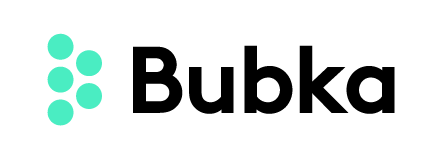Earlier this week, the great Les Binet addressed the Cannes audience together with Grace Kite and Tom Roach. After years of decline, long-term advertising effectiveness finally seems to be resurging and getting the attention it deserves. Once again it’s illustrated that the true drivers of brand strength are availability, affect and fluency (as also illustrated in a.o. Wim Vermeulen’s book Marketing for the Mad (Wo)Men of Tomorrow: Strong brands in a world of algorithms).
Marketers, don’t let those short-term metrics fool you any longer!
The Evolution of Attribution Modeling
In the pursuit of understanding advertising effectiveness, attribution modeling has played a crucial role. Binet’s research challenges the prevailing biases within this approach. It becomes clear that attribution modeling tends to favor short-term, direct, and functional communication strategies, often overlooking the potential impact of broad-reach, creative advertising. Startlingly, search advertising’s influence is frequently overestimated by a factor of two, while the true power of e.g. brand TV advertising is consistently underestimated by a staggering factor of 10. These findings necessitate a critical reevaluation of attribution models to accurately reflect the influence of different mediums and campaign elements.
The Renaissance of Effectiveness
A transformative period for advertising effectiveness began in the mid-2010s. Drawing from the IPA’s (the UK Institute of Practitioners in Advertising) extensive research and insights on the revenue return on investment of campaigns, a compelling pattern emerges. Since approximately 2015, advertising effectiveness has witnessed a notable resurgence across the board. It is noteworthy that the earlier decline in effectiveness was largely driven by the rise of online advertising. Now, the industry finds itself on a path to recovery by leveraging the same digital landscape that initially posed challenges.
Platform-Specific Paradigm
A paradigm shift has occurred in the advertising realm, underscoring the significance of tailoring content for specific digital platforms. Les highlighted the undeniable impact of crafting bespoke advertisements explicitly designed for each platform. For instance, Snap ads tailored to the platform garner 1.4 times more attention compared to repurposed content. Similarly, on TikTok, bespoke ads capture viewers’ attention for an average of three seconds longer. In the realm of YouTube, advertisements that follow the platform’s suggested story arc, skillfully blending emotional beats, demonstrate a higher likelihood of retaining viewer engagement beyond the standard five-second skip mark. These findings illuminate the importance of platform-specific content creation, enabling advertisers to optimize their messaging for maximum impact and resonance.
Embracing Unconventional Creativity
The power of embracing unconventional creative approaches in advertising cannot be overstated. Research by IPSOS confirms the potential of non-traditional strategies. Skippable ads that adopt an unconventional approach get an average of 40% longer viewing time, capturing audience attention and fostering stronger brand connections. Interestingly, despite many professionals’ focus on direct response, the data demonstrates that brand equity continues to influence approximately 64% of consumer choices. This highlights the enduring importance of building and nurturing strong brands, even as marketing approaches evolve.
The resurgence of advertising effectiveness marks an exciting juncture for the industry. Marketers and advertisers have the opportunity to recalibrate attribution models, tailor content for specific platforms, and embrace unconventional creativity. It will help them create more impactful campaigns that captivate audiences and drive meaningful business outcomes. And ultimately regain their position on the Board.
How to go about?
The good news is: operating models exist, based on research and science, to help marketers and brands turn their efforts into growth.
In association with Prof. dr. Gino Verleye (UGent), Bubka refined the available research and knowledge, and developed the Responsible Growth Model (RGM), which cracks the code to bring about behavioral change and enhance brand strength. It pinpoints the brand characteristics and strategic marketing criteria marketers should focus on to achieve growth.
Bubka’s creative work is then tailored to those specific attributes that most strengthen the brand and is tested for their degree of effectiveness before campaigns go live. The RGM Engine® is data-driven, integrated and continuous and has proven effective for brands across categories.
Reach out if you want to know more.


